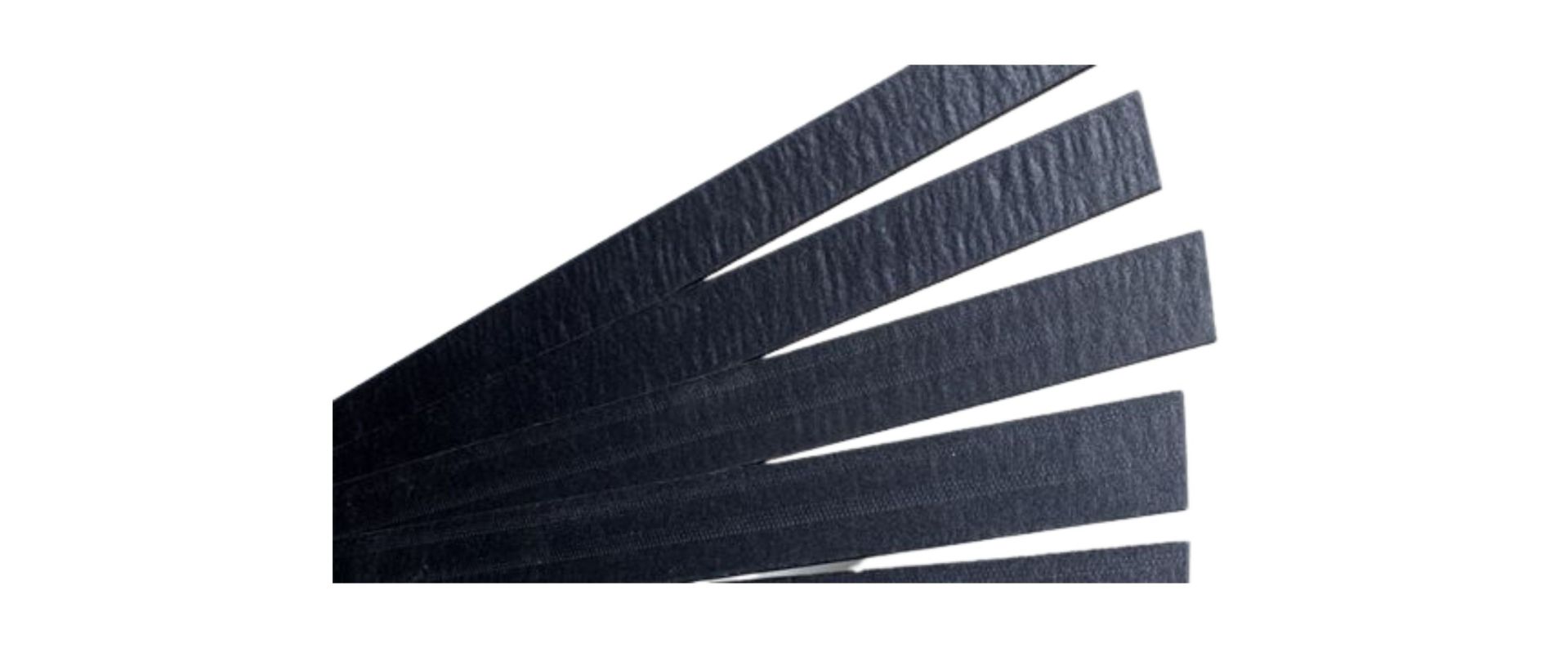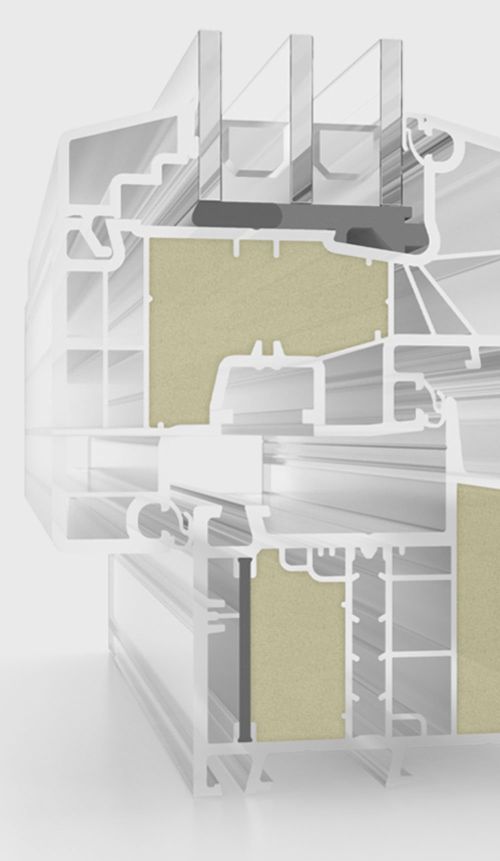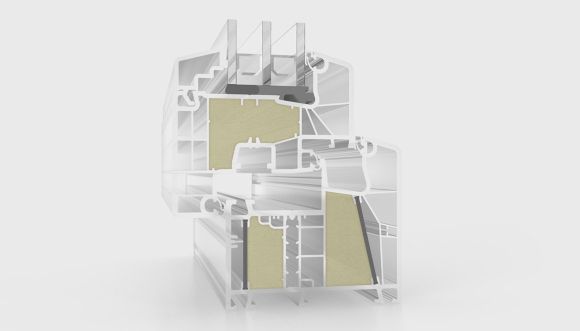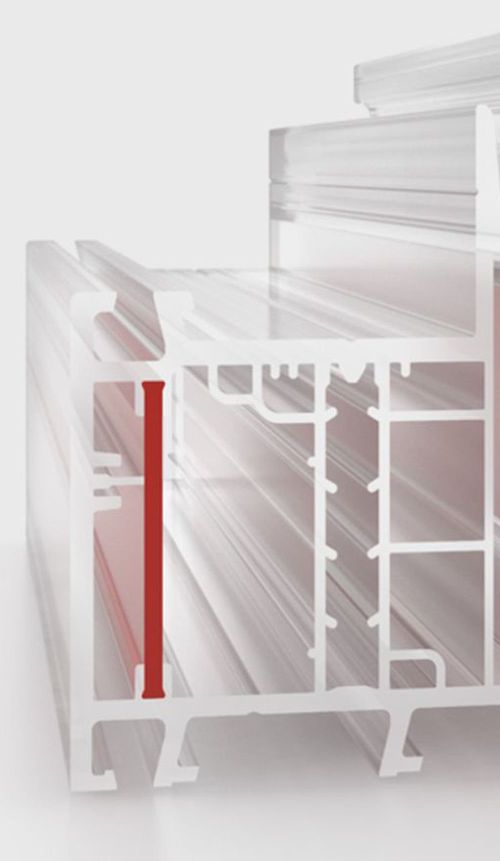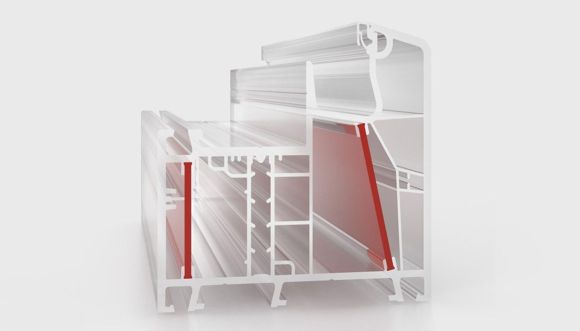Powerdur inside
The innovative coextrusion technology of PVC profiles using Ultradur® High Speed composite reinforcements with added fiberglass is called "powerdur inside."
Initiated with the implementation of glazing bonding technology, efforts to eliminate the "weak link", which are, from the point of view of thermal insulation of profiles, the steel reinforcements used in them, resulted in attempts to eliminate them completely from the sections. The powerdur inside technology is an example of such a solution, where it has successfully succeeded in replacing steel reinforcements in profiles.
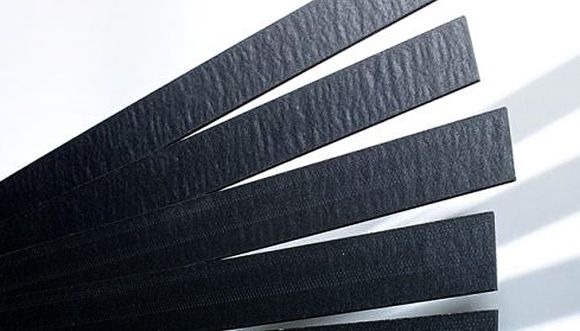
Powerdur inside – we eliminate the "weak link"
Metal bracing in window frame profiles creates a thermal bridge due to high thermal conductivity. The extremely good mechanical properties of Ultradur High Speed material make the material suitable for successful use in window frames.

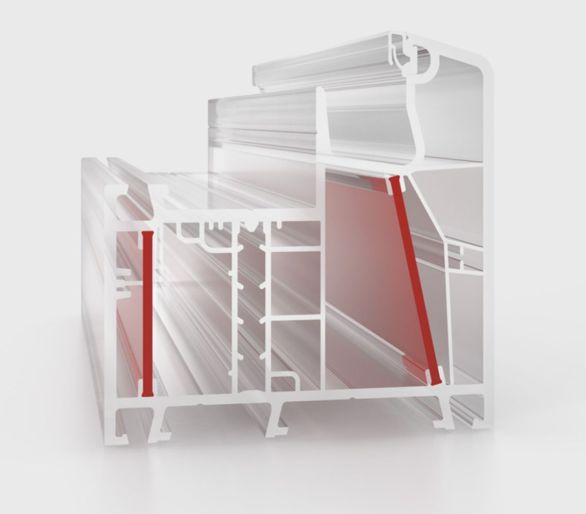
Thermal conductivity coefficient λ for materials contributing to the construction of window sections
The use of powerdur allows a marked improvement in the thermal properties of the profiles, which is largely related to the thermal conductivity of Ultradur High Speed, which is 50 times lower than that of steel.
PVC, λ = 0,17 W/(m2*K),
PBT Ultra High Speed, λ = 0,17 W/(m2*K),
Stal, λ = 0,17 W/(m2*K)
The thermal conductivity of Ultradur High Speed is 50 times lower than that of steel.
The fiberglass-reinforced thermoplastic replaces the steel used in conventional PVC window frames and provides significantly better thermal insulation properties with the same mechanical properties of the window.
The elimination of steel reinforcements allowed the elimination of thermal bridges and achieved a frame heat transfer coefficient of up to Uf = 0.94 W/m2K. It is worth noting that the very exorbitant parameters of Uf = 1.0 W/m2K were achieved already with a standard profile installation depth of 70 mm, which is 40% better than in standard 70 mm deep profiles with steel reinforcements. Thus, it can be seen that the research work carried out has made it possible to significantly reduce the thermal insulation coefficients without increasing the depth of the sections.
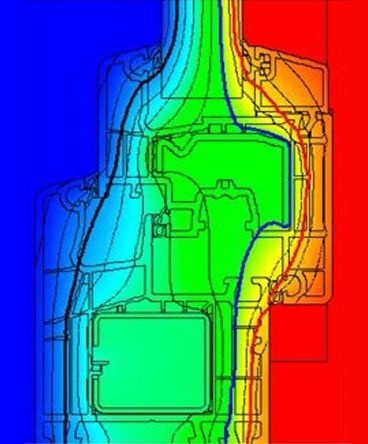
Okno ze wzmocnieniami stalowymi
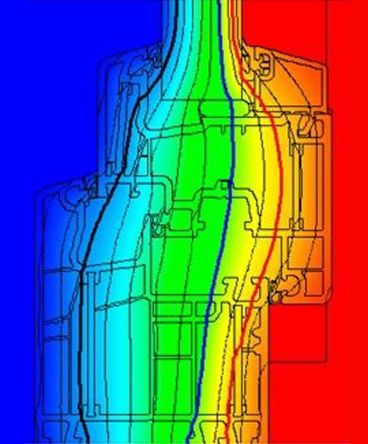
Okno bez wzmocnień stalowych
TERMOWIZJA - stalowe i tworzywowe wzmocnienie profili okiennych zatopionych w bryle lodu
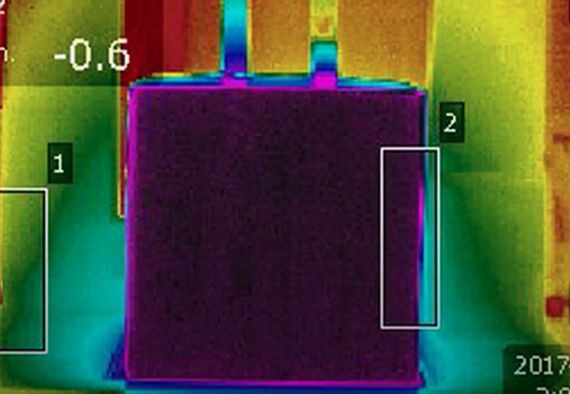 Click to play the clip
View video
Click to play the clip
View video
TERMOWIZJA - stalowe i tworzywowe wzmocnienie profili okiennych zatopionych w bryle lodu
O przewodności cieplnej wzmocnień stalowych oraz wzmocnień komozytowych można było się przekonać na specjalnej ekspozycji podczas targów BUDMA, co w bardzo ciekawy sposób okiem kamery termowizyjnej zarejestrowała firma TERMONIEBIESKI.
Technologia wklejania szyby bonding inside® ułatwia spełnienie wymagań dla okien w klasie antywłamaniowości RC2.
Brak wzmocnień stalowych nie wpływa również negatywnie na możliwość konstruowania okien o podwyższonej odporności na włamanie. Biegnące po całym obwodzie okna wzmocnienia z włókien szklanych zapewniają jednocześnie osadzenie wszystkich wkrętów od zawiasów w tym wzmocnieniu, podczas gdy w oknach konwencjonalnych część wkrętów mocujących zawias osadzona jest tylko w tworzywie PVC ze względu na odsunięcie wzmocnień stalowych od narożników okna. Kombinacje profili z „powerdur inside” zostały sprawdzone z powodzeniem wspólnie z wiodącymi producentami okuć.
Dzięki zastosowaniu technologii „powerdur inside” została całkowicie usunięta jedna z poważnych barier na drodze dalszego postępu w dziedzinie tworzenia energooszczędnych konstrukcjiwzmocnienia_powerdur okiennych, a jednocześnie symbolicznie „zakończyła się” epoka "klasycznych" okien z PVC, w których za statykę konstrukcji odpowiadały wzmocnienia stalowe.
